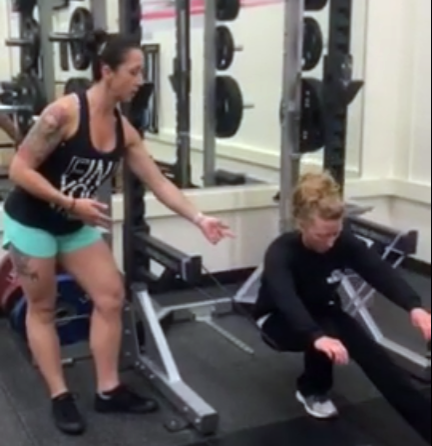
A pistol squat is a one-legged, bum-to-the-floor squat, and it is notoriously difficult for a fit person, let alone the average person, to execute. Quad and glute strength and mobility must be on point to perform a pistol squat effortlessly.
Taking Pistol Squat Regressions to the Next Level
For years I have done pistol squat regressions without ever even attempting to do a pistol squat proper without some tool or modification. My go-to modifications have been to use a bench, a box, or a suspension trainer. A few months ago pistol squats were assigned for the technique workout of the day (WOD). I immediately claimed a suspension trainer before anyone else could beat me to it.
But then my coach decided to challenge me to a new modification. She showed me the game-changing modification that progressed my pistols faster than ever and got me strong enough to pull them off unassisted.
The regressions below are, indeed, progressive. So start with the first and work up to the third.
3 Pistol Squat Regressions to Execute a Full Pistol Squat
Bench/Box
- Have clients stand in front of a bench, (preferably boxes that have stackable levels), and cue them to balance on one foot as they slowly lower their backside down to the bench.
- Cue them to drive through the balancing foot to return to standing. Clients that struggle with balance can keep a little bit of weight in the opposing heel, and/or put a little weight in their hands to help them feel steady as they descend and ascend from the prop.
Suspension Trainer
- Start clients facing the anchor point with strap handles in their hands. Elbows are bent and aligned under the shoulders and along the rib cage.
- Cue clients to float one leg off the floor in front of the body while balancing on the other foot.
- As they slowly lower towards the floor, their arms will straighten.
- If necessary, they can use a little upper body strength as they drive back up through the stable leg to standing position.
*If clients are worried about lowering too far, you can still place something, such as a medicine ball, behind them. Instruct clients to aim for but not sit on the prop.
Squat Rack with Resistance Band
This is the modification I am so excited to share with my fellow trainers.
- Set the squat rack spotter arms up at a height between clients’ mid-thigh and hips.
- Place a long, looped resistance band around the spotter arms to make a straight line, almost like a hammock.
- Cue clients to sit on the band (it should have enough resistance so clients don’t fall to the ground!).
- While simultaneously balancing on one foot and floating the other, lower down with their weight maintained on the band. Equal distribution of weight in the balancing foot as they lower and return to standing.
Side Note: Excited about this new trick I’d learned, I decided to post a video on my Instagram, and some of the trainers I look up to commented with enthusiasm that they were going to start using this modification.
Full Pistol Squat- No Gimmicks
Fast forward a couple of months, when busting out my new go-to pistol modification, my coach pulled me off the resistance band and made me give the real deal a go. No gimmicks. I had an aha moment; elated beyond belief to discover my breakthrough. Now, I am proud to say that not only can I pistol squat without any modifications, but I can do something I never even knew I wanted to do.






